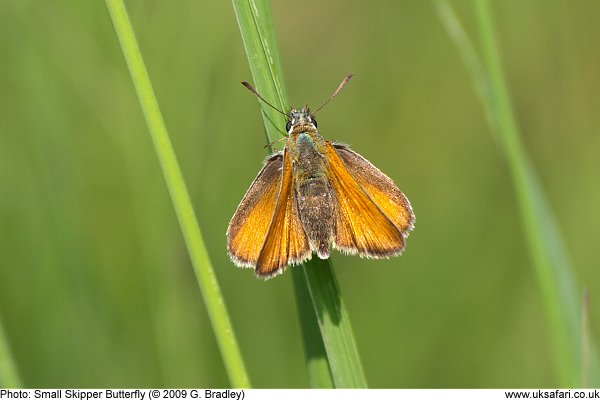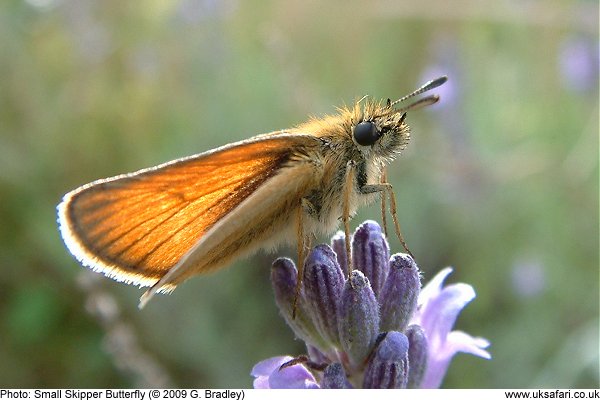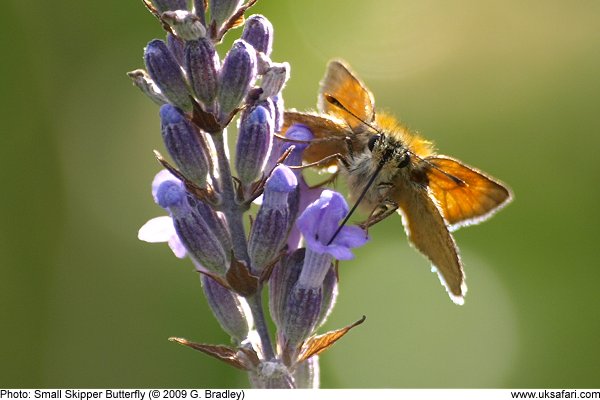 Quick Facts
Quick Facts
Scientific name: Thymelicus sylvestris
Size: Wingspan approx 30mm
Distribution: Found throughout England and Wales
Months seen: June to September
Habitat: Meadows, roadside verges and gardens
Food: Nectar. The caterpillars feed on various grasses
Special features: The small skipper is a uniform orange-brown all over, but the males have a dark stripe running across their forewings. The club shaped ends of the antennae are black on top, and orange-yellow underneath.
Like the large skipper, the small skipper rests with its forewings and hindwings held apart at different angles, looking more like a moth than a butterfly.
The female lays her cream coloured eggs, in a row, inside a curled up grass stem. When the caterpillar emerges (around August) it eats its eggshell, and then spins a cocoon, while still inside the grass stem.
It remains inside the grass stem for a further eight months. The following spring, it will re-emerge to feed on the fresh grass. By June or July, it will be a fully grown caterpillar, and will pupate at the base of a grass stem. After about two weeks the adult butterfly will emerge.
 Related Pages
Related Pages

 Popular Pages
Popular Pages
Amphibians, Bats, Badgers, Beetles, Birds, Birds of Prey, Bumble Bees, Butterflies, Caterpillars, Creepy-Crawlies, Deadly Spiders, Dolphins, Dragonflies, E-Postcards, False Widow Spiders, Free Newsletter, Frogs, Fungi, Garden Spiders, Glow-Worms, Grey Squirrels, Hedgehogs, House Spiders, Ladybirds, Mammals, Marine Mammals, Moths, Owls, Reptiles, Spiders, Toads, Trees, Wildlife Hospitals
© Copyright 2017 G. Bradley - UK Safari | About Us | Links | Contributors


 Small Skippers
Small Skippers




